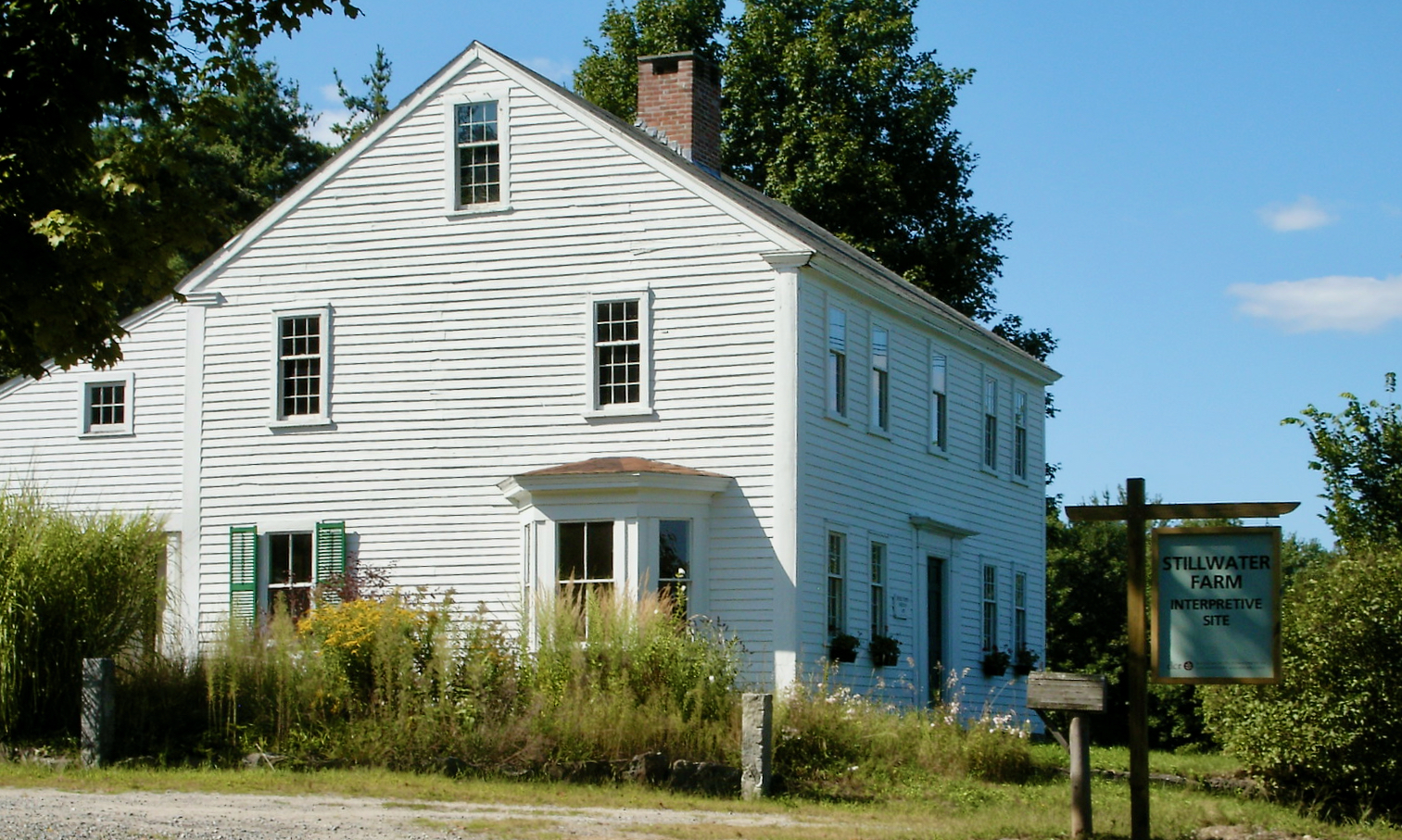The surviving portion of the Redding-Chandler Farm, today called “Stillwater Farm,” displays the remnants of a working farmstead that developed over many decades.
Established in the late-1700s by Zebedee Redding (c. 1769–1856), this farm was continuously operated for more than one hundred and fifty years. After Redding’s death, the farm eventually passed to the Chandler family. Charles H. Chandler expanded the farm, developing it into one of the town’s more prosperous dairy farms of the late nineteenth century.
While the house ell and several small outbuildings and structures are gone, the property has five buildings, including the Zebedee Redding House and the hundred-foot-long C.H. Chandler Barn (c. 1890), one of the few double-ended cow barns in Sterling, Massachusetts.
While much of the farm’s remaining acreage has reforested, evidence of its agricultural past are still identifiable in the landscape. A small meadow stretches west behind the farmstead and a broad hayfield survives, reminiscent of the long strips of hay meadows that lined portions of the Stillwater River in the eighteenth and nineteenth centuries.
In June 1990, the house, outbuildings, and thirty-four adjoining acres of the old farm were purchased by the Commonwealth of Massachusetts as part of its Wachusett Reservoir watershed protection program under the Metropolitan District Commission. The nonprofit Friends of the Wachusett Watershed formed two years later and launched an effort to preserve the farmhouse and some of the outbuildings as an interpretive site for the watershed.
The 1790s farmhouse was renovated, featuring displays about the Wachusett Watershed, history of the property, and the flora and fauna of the area. The Massachusetts Department of Conservation and Recreation offers educational programs and maintains a self-guided interpretive trail at the site.

